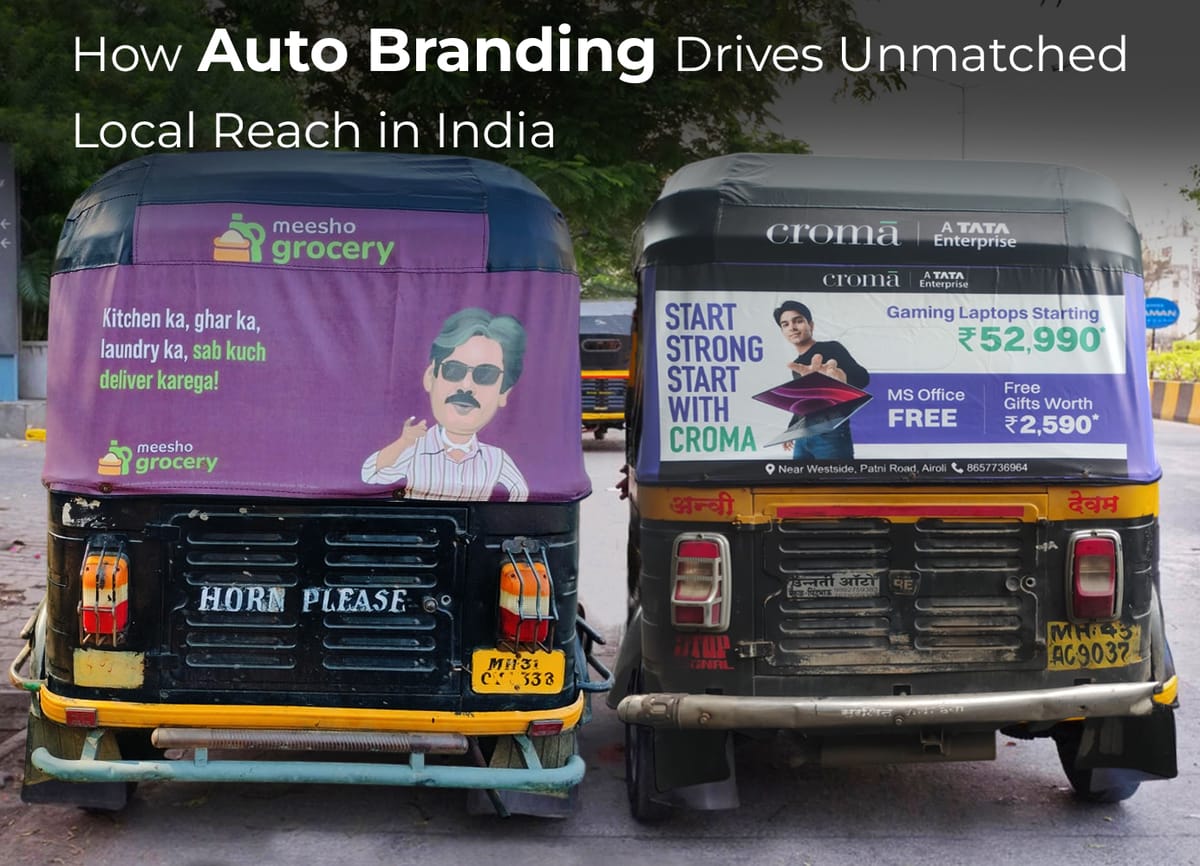Why turning autos into moving billboards is a cost-effective, high-impact transit advertising strategy for brands in India.

Introduction
In the vibrant, fast-paced streets of Indian cities, auto rickshaws are more than just three-wheeled taxis. They’re a constant presence in traffic jams, bustling markets, residential colonies, and office hubs. But today, autos have taken on a new role: powerful marketing tools that bring brands to life in the heart of everyday life.
Auto branding—the practice of wrapping rickshaws with creative, targeted advertising has emerged as one of the most cost-effective and hyperlocal forms of out-of-home (OOH) media. With India’s urban mobility culture, auto rickshaws offer unmatched exposure for brands seeking visibility, recall, and measurable results.
What is Auto Branding?
Auto branding involves using the body panels, backspace, and sometimes even the roof of an auto rickshaw as an advertising canvas. Autos move across diverse neighborhoods, carrying your message directly to where your audience lives, works, and shops.
Why Auto Branding Works in India
1. High Frequency, Low Cost
An auto rickshaw weaves through multiple high-footfall areas in a single day. This ensures your ad gets repeated exposure to the same audiences—perfect for building brand recall without the high price tag of premium billboards.
2. Hyperlocal Targeting
Whether you’re targeting college students in Pune, office-goers in Bengaluru, or shoppers in Delhi’s Chandni Chowk, you can deploy autos in specific routes and zones to ensure the right crowd sees your ad.
3. Long Campaign Lifespan
A single branding installation can last for weeks or months, giving you sustained visibility without recurring costs.
4. Creative Freedom
From bold colors to quirky taglines, the compact yet visible surface area of an auto encourages brands to think creatively—making ads not only seen but remembered.
Best Practices for Successful Auto Branding Campaigns
1. Keep It Visual
Your audience often has 3–5 seconds to process your ad. Focus on a strong visual, a short headline, and a clear call-to-action.
2. Localize the Message
Adding local language or city-specific references boosts relatability. For example, a food delivery app in Hyderabad could use a biryani-themed visual to connect instantly.
3. Plan Routes Strategically
Work with your media partner to choose routes that overlap with your target audience’s daily movement—offices, malls, schools, and metro stations.
4. Monitor & Measure
Use GPS-enabled autos or spot checks to ensure campaign execution matches your plan. Combine it with digital tracking (QR codes, special URLs) for measurable ROI.
BuzzOmni’s Approach to Auto Branding
At BuzzOmni, we integrate creative design, strategic route planning, and campaign tracking to deliver results. Our team has executed campaigns for FMCG brands, startups, and public awareness drives—helping clients reach millions on the move without overspending.
Whether it’s 100 autos in one city or 1,000 across multiple states, we ensure your campaign remains consistent, visible, and impactful.
Final Takeaway
Auto branding is not just an affordable advertising medium—it’s a high-impact, scalable marketing channel that thrives in India’s urban landscape. For brands looking to boost recall, spark conversations, and own the streets, this form of transit media is worth every rupee.
With the right partner, your brand could be rolling across the city, turning heads, sparking interest, and driving action.




